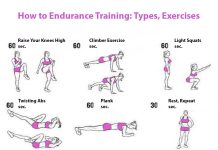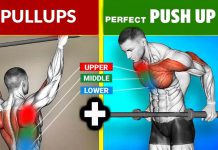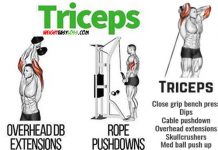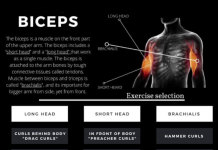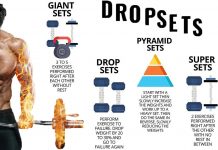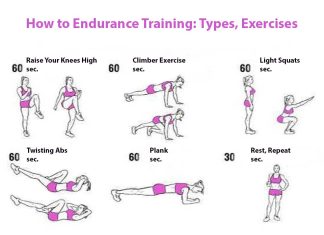Training plateau, What is, and How to Avoid it?
There is no greater joy for any athlete than to watch how his muscles mass is growing at the same time nothing disappoints so much as the state of a training plateau.
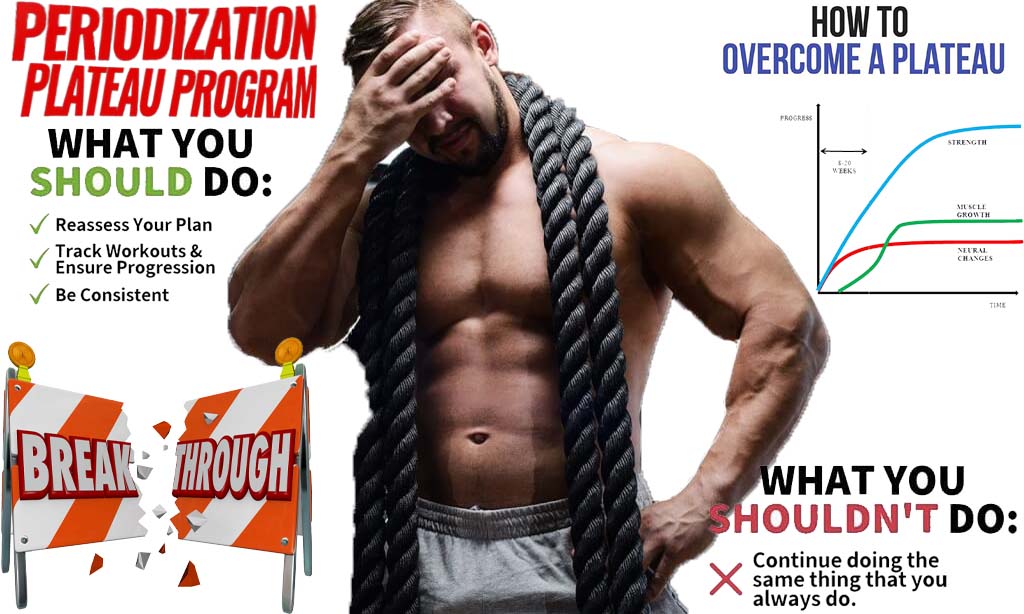
[wp_ad_camp_1]
This condition is named so because when we train very often, our body is exhausted and we reach a plateau. This is when the body is exhausted by so much that it spends energy only to maintain the muscles in the state in which they are at the moment and there is no question of muscle growth.
The content of the article:– Read time: 4 minutes |
What Happens with the Training Plateau?
There are several main reasons for a training plateau. Often this is an indicator that you have reached your intermediate peak form. Usually, this happens when there is too sharp a jump to a new level, and the body is physically not ready to move to the next. The correct decision in this case would be to shift the focus from strength training to more lightweight ones and to strengthen the muscles to complete the next “level of training programs”.
The second reason, which is less enjoyable, is overtraining. The increase in indicators is due to a regular increase in load. If you do not apply constant stress to the muscles, they quickly adapt to working weights or running volumes, and, as a result, a training plateau sets in. On the other hand, if the loads increase, then sooner or later the moment comes when the body simply ceases to cope with increasing intensity, volumes and weights or speeds.
The Onset of the Training Plateau can be Determined by the Following Signs:
- Bodybuilding – the absence of an increase in muscle mass;
- Powerlifting – stopping the growth of power indicators;
- Running and other cyclic sports – reducing speed indicators, fatigue;
- Decrease in motivation;
- Decreased appetite and general fatigue;
- Over increased heart rate during exercise;
How to Avoiding a Plateau?
The first thing to do is to reduce training volumes by 20-30%. Give your muscles a chance to recover, but don’t give up on training. Change the type of physical activity.
-Training process
- The next thing to do after reducing running volumes if these are active sports and if it is fitness training, respectively, reduce the volume and time of training – this means introducing variability into your training.
- Perhaps you are just mentally tired of the routine. Decide how to diversify your training and life schedule. Add cycles to your long runs or change your route if you are runner not to face a training plateau.
- Change your jogging route, or workout in the gym to workout with resistance band on the open air. When practicing in the gym, change your training program, replace the exercises to be performed with their analogs for the same muscle groups.
[wp_ad_camp_3]
– Nutrition
If you are going to progress, then nutrition is an extremely important element of the training process. Raise your calorie intake through more frequent meals. Keep track of the nutritional value of consumed foods.
– Sleep
Sleep is an essential component in enhancing results. Recovery is essential during exhausting workouts, so give him enough time. Try to sleep as much as your body requires. If possible, do not neglect sleep during the day.
– Running and weight training
The question of how to combine running and strength training not to run into a training plateau is extremely frequently asked and relevant.
It is very important to understand which of these areas is a priority for you, and which is auxiliary. Long-distance running is extremely energy-consuming, it practically does not leave forces for building muscle and working with large weights.
At the same time, excessive mass, even if working, does not help to overcome the marathon distance. Therefore, achieving growth indicators in both sports is becoming an almost impossible task.
Give cardio training no more than 20-30 minutes 2-3 times a week if you prefer bodybuilding.
If you are a runner do work in the gym aimed exclusively at developing the muscles involved in running.
Keep in mind all the processes that take place in our life besides training: stress at work, insufficient sleep, tiredness from business trips, poor nutrition. It is important to remember that our overall well-being affects the quality of the training. Try to maintain balance in all areas of your life.
Types, Tips of Avoid Training Plateau
Training plateau is the first sign that you need to relax a bit. Take a full week off the gym.
During this vacation, you need to completely review the training program, even if you really like it. Nothing will prevent you from returning to her later.
Replace most exercises with similar ones. Use dumbbells instead, and vice versa. For example, instead of a bench press, do several workouts with the bench press. Your main task is to invigorate your body with an unusual load and give an incentive to growth.
[wp_ad_camp_5]
If you absolutely do not want to change the program, you can do periodization. Train a couple of weeks with light and medium weights, not using heavy and maximum.
If the training plateau is in only one exercise, replace it with another. The “step back” option will also help:
- start this exercise with lightweight, then add a little weight in the next workout and so on. Gain weight smoothly, without jerking. Here you have to be patient.
Gradually you will reach the step on which you have noticed a plateau and go to a new level. This is a working technique that very well helps to overcome stagnation in a particular exercise.
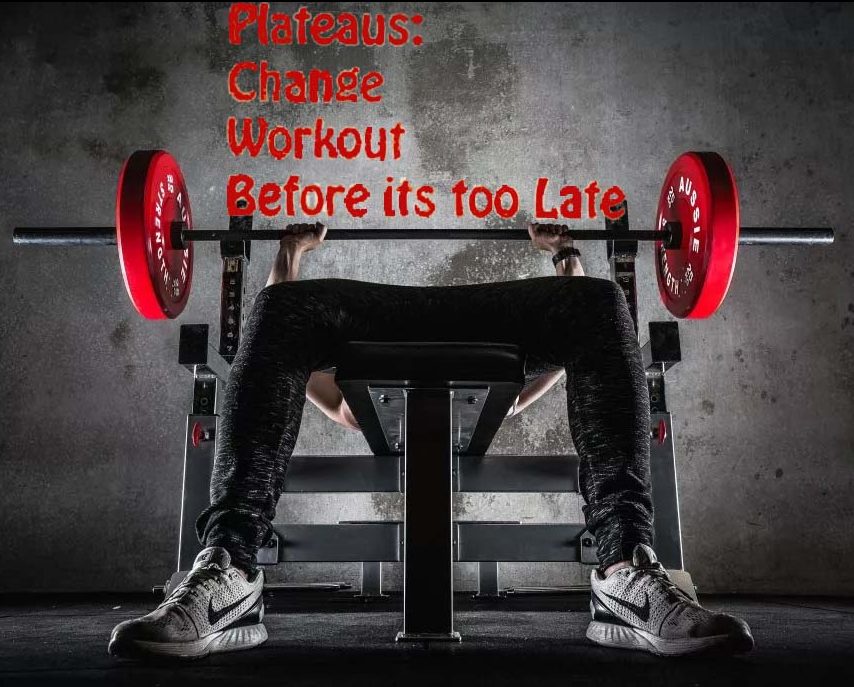
[wp_ad_camp_2]
For example: you cannot overcome the 100 kg barbell in the bench press.
Reduce your working weight to 70 kg. The intensity can be increased due to the faster executing of the exercise, more repetitions, and reduced rest time between sets.
In the next workout, increase the weight to 75 kg, in the next to 80, and so on, until you reach the cherished 100 kg. Using this technique you will not only pass the training plateau but also increase the working weight.
In general, the reason for the plateau in training is a monotonous exercise. Be creative in your workouts. Change your exercise order, grip, rest time, and number of repetitions more often.
Change your training programs periodically, but you don’t need to do this too often, once every 3 months the most suitable. Experiment with different options this should work.
Workout at 60-75% of maximum weight gives the best effect
With a training plateau, you can try to change the load at about 60% of your maximum, which you can do only once (which corresponds to about 10-12 repetitions). Presumably, this is the minimum level necessary to activate the entire spectrum of muscle fibers.
The study found out the effect of training intensity on a wide range of loads: from 20% to 90% of the maximum working weight of the subjects.
At a load intensity of 20%, they performed 3 sets of 27 reps, at 40% – 3 sets of 14 reps, at 60% – 3 sets of 9 reps, at 75% – 3 sets of 8 reps and 90% – 6 sets of 3 repetitions. Thus, the total amount of work (the total amount of weight lifted) was the same in all five variant workout.
As a result, the increase in muscle protein synthesis was minimal after exercise with an intensity of 20% and 40%, but significantly increased by 60% and athletes reached a plateau. In other words, with a further increase in the load in% of the maximum weight that the test subjects could take, there was no significant increase in muscle protein synthesis.
The results were true for both young and old people, confirming that the stimulating effect of exercises reaches a maximum at a load of ~ 60-75% of the maximum weight.
Rollback in Plateau
If you notice that you have a plateau, reduce the working weight by 10-20% and go through the progression again. A slightly reduced load will help to hone the technique and return to the growth of results, bringing to a new level of growth of strength and muscles. Many athletes are scared by the idea of removing a couple of weight disks from the bar, but the “one step back two forward” strategy has been tested by time and is very effective.
What is good – you can roll back in not all exercises, but only in those in which you felt a plateau.
















